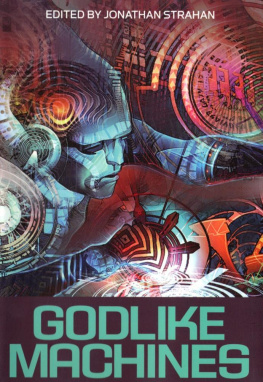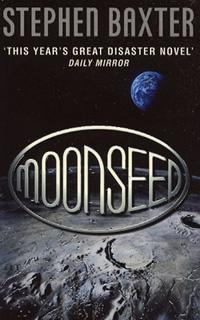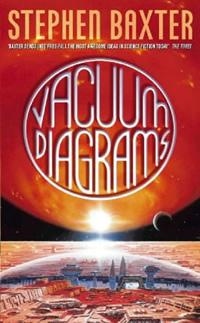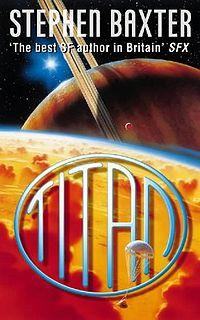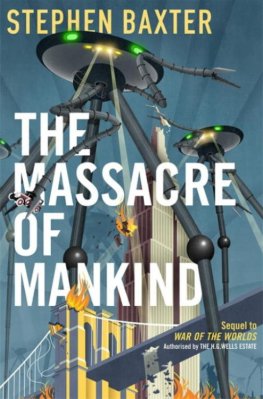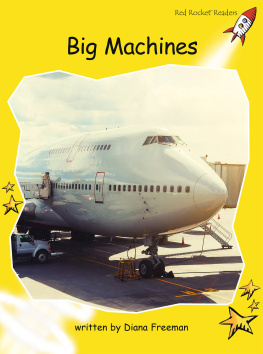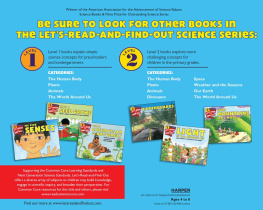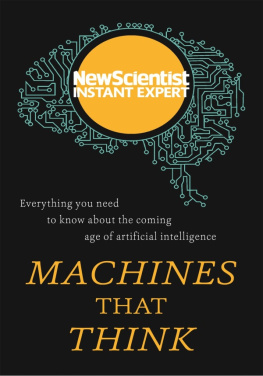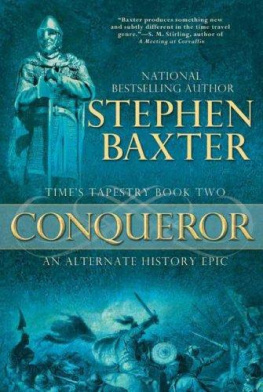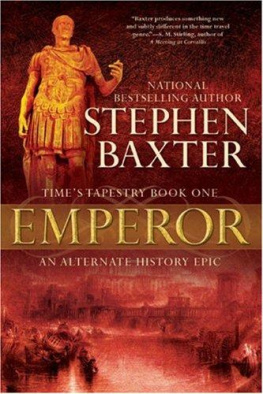Stephen Baxter - Godlike Machines
Here you can read online Stephen Baxter - Godlike Machines full text of the book (entire story) in english for free. Download pdf and epub, get meaning, cover and reviews about this ebook. year: 2010, publisher: Science Fiction Book Club, genre: Detective and thriller. Description of the work, (preface) as well as reviews are available. Best literature library LitArk.com created for fans of good reading and offers a wide selection of genres:
Romance novel
Science fiction
Adventure
Detective
Science
History
Home and family
Prose
Art
Politics
Computer
Non-fiction
Religion
Business
Children
Humor
Choose a favorite category and find really read worthwhile books. Enjoy immersion in the world of imagination, feel the emotions of the characters or learn something new for yourself, make an fascinating discovery.
- Book:Godlike Machines
- Author:
- Publisher:Science Fiction Book Club
- Genre:
- Year:2010
- Rating:3 / 5
- Favourites:Add to favourites
- Your mark:
- 60
- 1
- 2
- 3
- 4
- 5
Godlike Machines: summary, description and annotation
We offer to read an annotation, description, summary or preface (depends on what the author of the book "Godlike Machines" wrote himself). If you haven't found the necessary information about the book — write in the comments, we will try to find it.
Godlike Machines — read online for free the complete book (whole text) full work
Below is the text of the book, divided by pages. System saving the place of the last page read, allows you to conveniently read the book "Godlike Machines" online for free, without having to search again every time where you left off. Put a bookmark, and you can go to the page where you finished reading at any time.
Font size:
Interval:
Bookmark:
GodlikeMachines
Edited by Jonathan Strahan
In memory ofthe late Charles N. Brown, who read this book and loved it, with greataffection and deep gratitude.

There are ahandful of people who require special thanks, who went above and beyond thecall to help make this book a reality. First and foremost, my sincere thanks tothe books contributors, Steve, Cory, Al, Bob, Greg, and Sean, all of whom haveshown almost heroic patience and stuck with this book through some fairly longdelays-Ill always be incredibly grateful to them for doing so. Second, mycommissioning editor on this book, Andrew Wheeler, who bought it and believedin it. Id also like to thank John Scalzi, Charles Stross, Gary K. Wolfe,Charles N. Brown, Howard Morhaim, Justin Ackroyd, and Jack Dann. Thanks also tothe following good friends and colleagues without whom this book would havebeen much poorer, and much less fun to do: Lou Anders, Deborah Biancotti, EllenDatlow, and Gardner Dozois.
As always, mybiggest thanks go to Marianne, Jessica and Sophie. Every moment spent workingon this book was a moment stolen from them. I only hope I can repay them.
GodlikeMachines, Machinelike Gods
Jonathan5trahan
The book you arenow holding was inspired by a painting.
Artist MichaelWhelan was commissioned to paint a cover for a reissue of the fourth novel inIsaac Asimovs Foundation series, Foundations Edge. The painting,Trantorian Dream, depicts a small male figure standing amongst rubble,framed by enormous rusting ruins and gazing at a glowing spiral galaxy. It isan image that seems to depict, clearly and simply, much of the sense of wonderthat we look to science fiction to provide.
When, back inearly 2006, I approached the Science Fiction Book Club with the idea for a newbook of original science fiction novellas I had that image in mind: I wanted tocome up with a loose idea that would give writers enough space to createsomething unique, but also give them a clear idea of the kind of story Ihad in mind, and the kind of book I wanted to do.
I looked at many ofthe classic science fiction books and stories that I had loved, and settled onthe idea of a book of stories featuring what science fiction critic Roz Kaveneydubbed big dumb objects. A big dumb object is essentially an extremely large,extremely powerful structure, most likely of extraterrestrial or unknownorigin. These megastructures-dyson spheres, alderson disks, matrioshkabrains-and other stranger and more unusual objects drive the stories in LarryNivens Ringworld, Greg Bears Eon, and Frederik Pohls Gateway.Even in Terry Pratchetts Discworld, I later realised. There is somethingintensely science fictional about the very notion of a big dumb object,embodying as it does both the enigmatic sense of wonder of the best SF and theurge to understand, to examine and clarify. After all, while a big dumb objectmay be alien and enigmatic, its also a made object, and therefore isknowable and understandable.
When I suggestedthe book to my editor at the SF Book Club, Andrew Wheeler, he was eager, butmade it clear I needed a good name for the book. I began to look around forideas, for inspiration. I was working on another project at the time, and asresearch was reading Brian Aldisss 1974 anthology, Space Opera. In ithe explains much of the joy and wonder of space opera. The closing section ofthe book deals with the great machines-spacecraft and otherwise that uniquelybelong to science fiction. He titled that section of the book, these godlikemachines. I had my title and, at the same time, threw the first variable intothe project.
I wrote to writerswhose work I admired and whom I hoped would write for the book-Stephen Baxter,Cory Doctorow, Greg Egan, Robert Reed, Alastair Reynolds, and Sean Williams-andI asked if theyd write a new big dumb object story for my book. Writers arefunny folk and they sometimes hear what they want to hear. We dont live in theforties and fifties any more, and when they heard godlike machines, theybegan to play with the idea. Did it have to be godlike machines? Couldnt itbe machinelike gods? How big did a godlike machine have to be?
Over the course ofediting a number of anthologies Ive realized that there are times when youneed to stick to your original vision, and there are times when you need to getout of the way and let creative people do what they do best. So, I said yes.You could have an enormous enigmatic megastructure drifting in space, or buriedbeneath the crust of some distant world, or you could have some strange,powerful literally god-like machine. Heck, you could turn the moon into greencheese if you wanted to. All you had to do was tell an amazing sciencefictional tale, one that spoke to the basic idea Id started with.
And slowly, over aperiod of about eight months, the stories began to drop into my mail box. Inone, strange powerful machines battled one another, in others something strangeand mysterious happened in a distant corner of our solar system. I dont knowthat the book you are about to read is the most definitive addressing of the bigdumb object theme in science fiction, but I do know you are about to encountera handful of stories that are made from the pure stuff of science fiction,filled with that sense of wonder many of us look for in the very best sciencefiction. I hope you like it as much as I do.
JonathanStrahan Perth, Western Australia June 2008/June 2010
AlastairReynolds
AlastairReynolds was born in Barry, South Wales in 1966. He has lived in Cornwall,Scotland, and the Netherlands, where he spent 12 years working as a scientistfor the European Space Agency. He became a full-time writer in 2004, andrecently married his long-time partner, Jo-sette. Reynolds has been publishingshort fiction since his first sale to Interzone in 1990. Since 2000 hehas published nine novels: the Inhibitor trilogy, British Science FictionAssociation award winner Chasm City, Century Rain, Pushing Ice, The Prefectand House of Suns. His most recent novel is Terminal World. Hisshort fiction has been collected in Zima Blue and Other Stories, GalacticNorth, and Deep Navigation. In his spare time he rides horses.
By the time Ireach the road to Zvezdniy Gorodok acute hypothermia is beginning to set in. Irecognize the symptoms from my training: stage one moving into two, as my bodyredirects blood away from skin to conserve heat-shivering and a general loss ofcoordination the result. Later I can expect a deterioration of vasomotor toneas the muscles now contracting my peripheral blood vessels become exhausted. Asblood surges back to my chilled extremities, Ill start to feel hot rather thancold. Slipping ever further into disorientation, it will take an effort of willnot to succumb to that familiar and distressing syndrome, paradoxical undressing.The few layers of clothes Im wearingthe pajamas, the thin coat I stole fromDoctor Kizimwill start feeling too warm. If I dont get warm soon theyll findme naked and dead in the snow.
How long have Ibeen out? An hour, two hours? Theres no way to tell. Its like being back onthe Tereshkova, when we slept so little that a day could feel like aweek. All I know is that its still night. Theyll find me when the sun is up,but until then theres still time to locate Nesha Petrova.
I touch the metalprize in my pocket, reassuring myself that its still there.
As if invoked bythe act of touching the prize, a monstrous machine comes roaring towards me outof the night. Its yellow, with an angled shovel on the front. I stumble intothe path of its headlights and raise a wary hand. The snow-plow sounds itshorn. I jerk back, out of the way of the blade and the flurry of dirty snow itflings to one side.
Next pageFont size:
Interval:
Bookmark:
Similar books «Godlike Machines»
Look at similar books to Godlike Machines. We have selected literature similar in name and meaning in the hope of providing readers with more options to find new, interesting, not yet read works.
Discussion, reviews of the book Godlike Machines and just readers' own opinions. Leave your comments, write what you think about the work, its meaning or the main characters. Specify what exactly you liked and what you didn't like, and why you think so.

